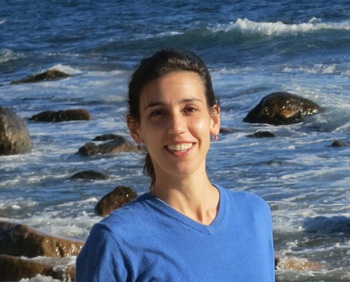A Microdiversity for Each Season: Team Reveals Subtle Shifts in Salt Marsh Bacteria

Among the most abundant bacteria in the ocean are Synechococcus, a group of cyanobacteria that form much of the base of the marine food web. These widespread marine bacteria obtain their energy through photosynthesis, and as such they help moderate the atmospheric concentration of carbon dioxide. For these reasons, as the climate warms, it becomes increasingly important to understand factors that affect Synechococcus populations.
Researchers from the Marine Biological Laboratory (MBL) and colleagues recently published a paper in Frontiers in Microbiology that adds importantly to that understanding. The study examines the population dynamics of different types of Synechococcus in Little Sippewissett salt marsh on Cape Cod, Massachusetts, through time and the changing seasons.
A novel method of distinguishing between subtypes of a bacterium, called oligotyping, made the study possible. Oligotyping, which had its origins at MBL, utilizes subtle DNA differences among Synechococcus to distinguish subtypes, says study co-author Kristen Hunter-Cevera, a Hibbitt Early Career Fellow at the MBL.
 Hibbitt Early Career Fellow Kristen Hunter-Cevera
Hibbitt Early Career Fellow Kristen Hunter-Cevera“It allowed us to explore the relative abundance dynamics of different types of Synechococcus, which led us to find that 1) the Synechococcus population is diverse at this marsh, and 2) the relative abundance of these subtypes (or oligotypes) varies over the year,” she says.
“It is the microdiversity within the species that I find fascinating because it expands the niche of Synechococcus. If the environmental conditions change to no longer favor one oligotype, then another one that is better adapted to those conditions will bloom up to take it’s place,” says lead author Katherine R.M. Mackey, who was a postdoctoral fellow at MBL and is now a professor at the University of California, Irvine. “The result is that Synechococcus is able to thrive over a much broader range of conditions than a species with less microdiversity could.”
“In our study, this is apparent from the shifting of oligotypes between early and late summer,” Mackey says. “One group prefers cooler temperatures, one prefers warmer temperatures. So as the summer progresses and the water warms, the first group becomes less competitive and the second group becomes more competitive. But the overall effect is that Synechococcus as a species remains abundant, even though the subtypes are changing in abundance.”
Variations in salinity also influenced occurrence and abundance of subspecies, and other environmental factors can do so as well.
“It is also interesting why we see certain oligotypes co-occurring in the environment,” Mackey says. “Are they helping each other, and if so, how? These co-occurrence patterns tend to be consistent from one year to the next, so they probably aren’t random.”
“Understanding what drives these populations is very important,” Mackey says. “Climate change changes the parameters that determine what can grow, and how fast, and how abundant they can become.”
Rising temperatures affect abundance, Mackey says. Changes in ocean circulation patterns can affect the availability of nutrients in different locations. Those changes can affect the food supply of fish and other oceanic inhabitants.
Different growth rates among phytoplankton like Synechococcus can alter nutrient cycling and availability, and change the speed rate and amount of carbon fixation. “If the plankton fix less carbon, there’s more in the atmosphere,” Mackey says.
Thus, the study has begun to illuminate the mechanisms by which a species can maintain its diversity, and the benefit that has for the entire ecosystem. But “it is likely a more complicated combination of environmental variables and biological factors that determines the abundance of each Synechococcus subtype,” Hunter-Cevera says.
Citation:
Katherine R.M. Mackey, Kristen Hunter-Cevera, Gregory L. Britten, Leslie G. Murphy, Mitchell Sogin and Julie A. Huber (2017) Seasonal Succession and Spatial Patterns of Synechococcus Microdiversity in a Salt Marsh Estuary Revealed through 16S rRNA Gene Oligotyping. Front. Microbiol. DOI: 10.3389/fmicb.2017.01496